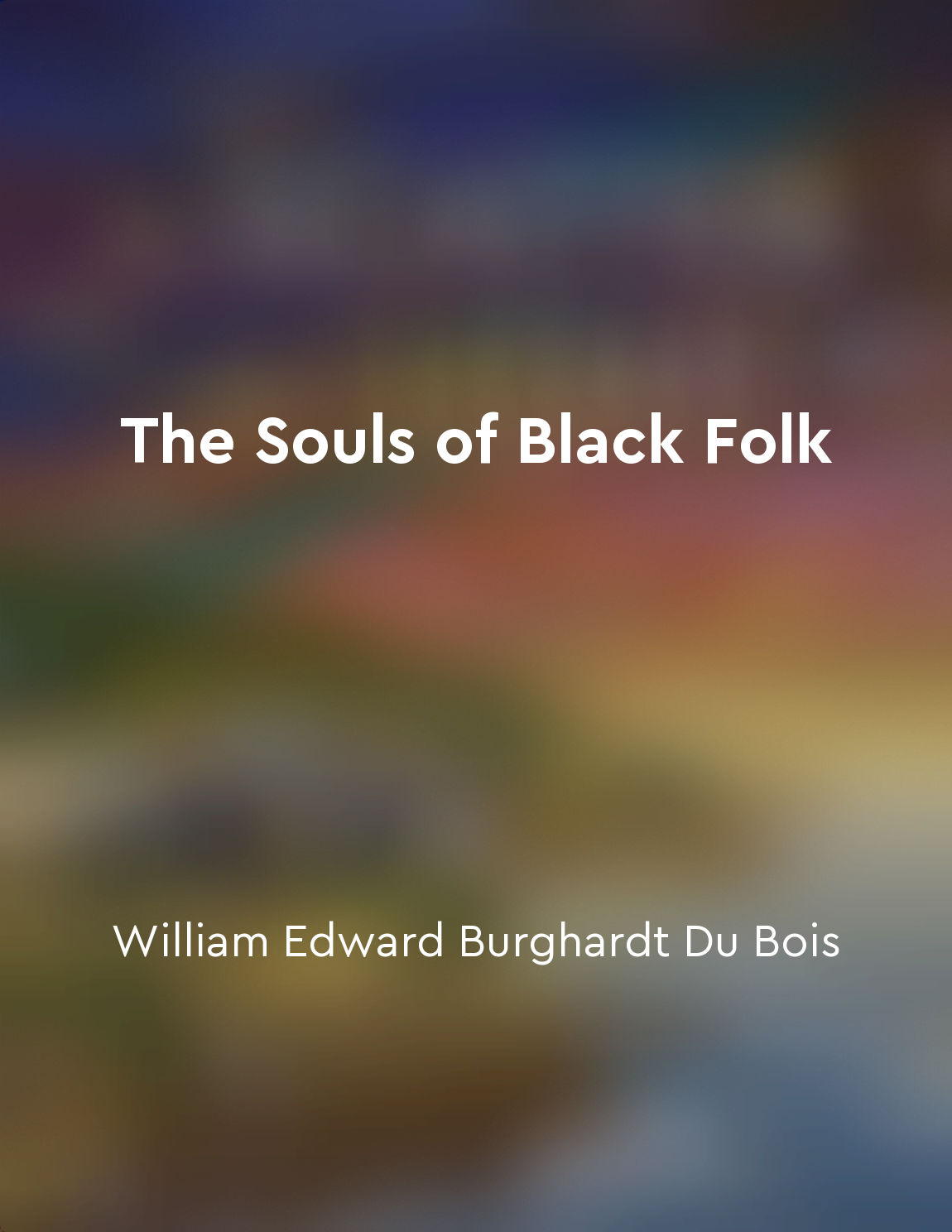The concept of the "Veil" from "summary" of The Souls of Black Folk by William Edward Burghardt Du Bois
The Veil is a metaphor for the barrier that separates black Americans from the rest of society, a physical reminder of their exclusion from the white world. It represents the color line that divides the races, defining the limitations and opportunities of black individuals. This division creates a sense of double consciousness, where black people see themselves through the eyes of others, internalizing their prejudices and stereotypes. The Veil also symbolizes the invisibility and marginalization of black Americans, who are often overlooked and disregarded in a white-dominated society. This invisibility makes it difficult for black individuals to fully express themselves and be understood by others, leading to feelings of alienation and isolation. They are constantly reminded of their otherness, unable to fully integrate into the mainstream culture. Moreover, the Veil represents the psychological toll of racism on black Americans, who must navigate a world that devalues their humanity and denies them equal rights and opportunities. This constant struggle for recognition and respect takes a toll on their mental and emotional well-being, leading to feelings of anger, frustration, and despair. The Veil serves as a barrier to their full participation in society, hindering their ability to achieve their full potential. Despite these challenges, Du Bois also suggests that the Veil has a transformative power, as it allows black individuals to see the world from a unique perspective and develop a strong sense of self-awareness and resilience. Through their experiences of oppression and discrimination, black Americans can cultivate a sense of pride in their heritage and culture, finding strength in their shared history and struggles. The Veil, therefore, becomes a source of empowerment and solidarity for black individuals, enabling them to resist the forces of racism and injustice.- The concept of the Veil captures the complex realities of race and identity in America, highlighting the social, psychological, and emotional barriers that black Americans must navigate in their daily lives. It serves as a powerful symbol of the enduring legacy of racism and discrimination, as well as a source of strength and resilience for black individuals striving for equality and justice.


